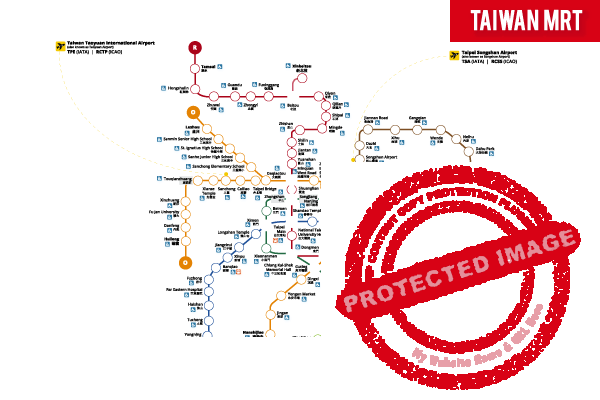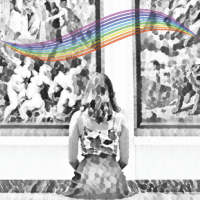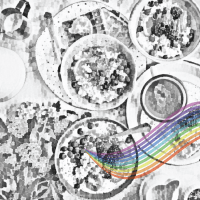- Atilla Tiriyaki
- Average Reading Time: 20 minutes
- Travel
- articles, atillat, guides
Taipei is a modern bustling city full of contemporary and traditional Asian architecture where you are never too far away from a park or green space. Taipei is known as the ‘City of Azaleas’, given the beautiful and colourful flowering shrubs that can be found throughout the city. From fine dining, shopping for luxury and designer clothes to traditional night markets, museums and fantastic street food, you can find it all in this amazing Asian city
Located in Eastern Asia, Taipei, also known as Taipei City, is the capital city of Taiwan. Taiwan is an island that is 5,808 square kilometres (13,826 square miles) and is located 130 kilometres (81 miles) from mainland China. Taiwan is a municipality and officially part of the Republic of China. Taiwan has an estimated population in 2020 of 23.6 million residents, with 2.6 million (or 11%) of Taiwanese people living in the city of Taipei. The city can be referred to as either a whole metropolitan area or as a city proper and is considered one of the major hubs in Eastern Asia. The Xindan River borders Taipei in the south and the Tamsui River in the west. 95% of the entire popular are Han Chinese (descendants from mainland China). Mandarin is the most spoken language throughout the island, followed by Hokkien (also known as Taiwanese), which 70% of the Taiwanese population speak.
Taipei is a modern city, with the downtown area divided into two halves. The west side is considered the older and more traditional Taipei, known for its narrow streets and roadside vendors. The east side is Taipei’s modern side with chic boutiques, world-renowned restaurants, cafes and shopping malls. Taipei is packed full of traditional buildings such as the Lukang Longshan Temple and contemporary architecture such as Taipei 101 Building. Modern Taiwanese architecture has existed since 1945; before that period, Taiwan was under Japanese colonial rule. Under Japanese rule, only Japanese citizens were permitted to design buildings. Like the rest of Taiwan, Taipei has a long history, from the Dutch and Spanish settlers in the 1700s to the Japanese rule that lasted 59 years and ended after World War II. Taiwan’s history can be seen and discovered throughout the city and country.
Some interesting facts you might not know:
Taipei is a modern city, with the downtown area divided into two halves. The west side is considered the older and more traditional Taipei, known for its narrow streets and roadside vendors. The east side is Taipei’s modern side with chic boutiques, world-renowned restaurants, cafes and shopping malls. Taipei is packed full of traditional buildings such as the Lukang Longshan Temple and contemporary architecture such as Taipei 101 Building. Modern Taiwanese architecture has existed since 1945; before that period, Taiwan was under Japanese colonial rule. Under Japanese rule, only Japanese citizens were permitted to design buildings. Like the rest of Taiwan, Taipei has a long history, from the Dutch and Spanish settlers in the 1700s to the Japanese rule that lasted 59 years and ended after World War II. Taiwan’s history can be seen and discovered throughout the city and country.
Some interesting facts you might not know:
- The name Taipei means ‘North of Taiwan’ in Mandarin
- Lunar New Year, also known as Chinese New Year, is the biggest holiday for the Taiwanese people each year. A popular cake to eat during the festival is Taiwanese mooncakes. The traditional mooncakes are filled with sweetened red bean paste, sometimes with chewy mochi in the centre
- Taipei has an extensive free public access Wi-Fi service available across the city. Visitors and residents can use any of the thousands of hotspots found throughout the city. You can find the city’s hotspots easily by visiting https://wifi.taipei/en/search_map
- Food is an integral part of the Taiwanese culture, so much so that a standard greeting is to ask, ‘Have you eaten yet?’
- There are 13 languages spoken in Taiwan, with the most commonly used being traditional Mandarin. The native language is Hokkien or Taiwanese, spoken by 70% of the population. The island historically had 20 aboriginal languages; however, only 16 have been officially recognised by the government. Of all the languages, ten aboriginal languages are still spoken and used today. Taiwanese, Traditional Mandarin is widely spoken, with Japanese spoken by some older members of the community in the north
- Taipei is a clean city with musical trash/disposal trucks known for playing tunes throughout the city
- Taiwan is great for hikers, with 165 tall mountains and 275 peaks over 3,000 meters, and is also home to 9 national parks. The highest mountain in Taiwan is Yu-Shan (or Jade Mountain) in Yu-Shan National Park. Taiwan is also home to over 150 hot springs. Taiwan has the world’s second-highest concentration of hot springs, after Japan
- Taiwan is located in an area known as the ‘Ring of Fire’, which is in the basin of the Pacific Ocean, where many earthquakes and volcanic eruptions occur. Its location makes this island one of the most earthquake-prone places in the world
- ‘No’ is considered rude within Taiwanese culture; instead, they say ‘Maybe.’
- Like the number 13 is considered unlucky in many American and European countries, the number 4 is deemed unlucky in Taiwanese culture. Hence, they avoid using the number in buildings, elevators, etc.
- Taiwan is small and to get around the island takes an average of 12 days
- The native and largest land-based animal in Taiwan is the Formosan black bear. The island is also home to over 400 species of butterflies, the Formosan Pangolin and the Formosan Macaque
- White symbolises death in Taiwan and is used in funerals; Red is a popular colour for weddings as it symbolises luck, joy and happiness
- Instant Noodles and Bubble Tea were both invented in Taiwan
- Taiwan was the first democratic republic in Asia and the first country in Asia to legalise same-sex marriage
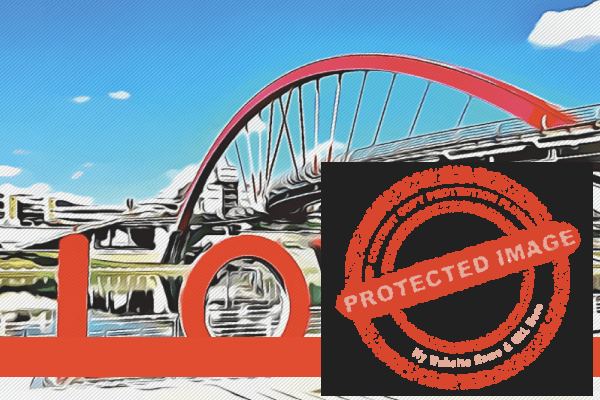
Taipei is an international city and a hub that connects travellers to Eastern Asia from the rest of the world. Taipei is ranked 19th in the world’s most visited city destinations, with 9.9 million visitors arriving in the city in 2019. According to statistics produced by the Taipei city government, in 2020, the city had an average annual temperature of 24 Celsius (75.2 Fahrenheit). It consists of 456 villages, 9,568 neighbourhoods, and over 1 million households.
BY AIR
BY SEA
BY TRAIN
BY AIR
- Taoyuan International Airport (///matting.resubmit.viaduct – TPE (IATA) | RCTP (ICAO)) is an international airport and the largest and busiest airport in Taiwan. The airport is located west of the city and is approximately 25 miles or 45 kilometres from the city centre. The airport is the main international hub for China Airlines, EVA Air and Starlux Airlines, and a regional hub for Mandarin Airlines, Uni Air and Tigerair Taiwan. The busiest routes to and from Taipei are Hong Kong, Tokyo, Osaka, Seoul and Bangkok. Many travel options are available for getting to and from the airport. The Taoyuan Airport MRT is a popular option. It takes passengers from the airport directly to Taipei Main Station in the city’s centre. Several bus services frequently run from the various parts of the city (routes 5201, 1843, 1960, 1961, 1819, 1840, 1841, 1962, 706) and two shuttle services are available from within the terminal building. Metered taxis are also available outside the terminal buildings, and an average journey from the airport to Taipei city centre takes approximately 50 minutes and will cost around 50 US dollars
- Taipei Songshan Airport (///renew.searches.lights – TSA (IATA) | RCSS (ICAO) is an international airport and is a smaller airport compared to Taoyuan International Airport. The airport has scheduled domestic flights within Taiwan and international destinations such as Seoul, Tokyo and some cities in mainland China. Also, the airport is used as a base for the Republic of China Air Force. The airport is located in North-West Taipei and is approximately 4.5 kilometres or 2.8 miles from the city centre. Getting to and from the airport is easy. The Taipei MRT (Metro) BR – Wenhu Line runs from the Taipei Zoo metro station to the Taipei Nangang Exhibition Center, with the station for the airport located centrally within the line. Several bus routes are available across the city that takes passengers directly to and from the airport (routes 262, 254, 225, 275, BR1); however, no shuttle services are available from within the terminal. Metered taxis can be found outside of the arrivals lobby, and a journey to central Taipei takes approximately 10 minutes and will cost roughly 10 US dollars
BY SEA
- Taiwan has four major and two minor ports. The closest port to Taipei city is the Port of Taipei, followed by the Port of Keelung
- Port of Keelung (///rewarm.wage.worthier) is the main port in Taipei. It is located approximately 16 miles (25.7 kilometres) southwest of the city centre. The port operates many ferry routes between Taiwan and mainland China (Xiamen, Fuzhou and Pingtan) via Matsu Island. Several large cruise liners such as Royal Caribbean, Princess Cruises and Holland & America all offer cruises that dock at Keelung. Getting to and from the port is easy as many transport options are available. A train service runs from Keelung Train Station to Taipei Main Station, with the average journey taking approximately 45 minutes. There are several bus companies running services from the port terminal to the centre of Taipei. A typical bus journey will take about 50 minutes and run every 10-20 minutes
BY TRAIN
- Many train stations can be found throughout the city, connecting the Taiwan Railway and the Taiwan High-Speed Rail. The city’s main train station is the Taipei Main Station. Taiwan consists of 2,025 kilometres or 1,258 miles of a railway network connecting all parts of the island. Taiwan Railways is made up of 228 stations and 1,065 kilometres or 662 miles long, and the Taiwan High-Speed Rail is made up of 12 stations and is 349.5 kilometres or 217 miles long
- Taipei Main Station (///giggled.clues.clots) connects the Taipei MRT, Taiwan High-Speed Rail and Taiwan Railway. The station is the busiest in Taiwan, with over 190 million passengers entering and exiting the station annually. No international trains run to and from Taipei; however, the train station connects Taipei to all towns and cities across Taiwan, including Daan, Taoyuan, Nangang, Shulin and Keelung
Interactive Airport Terminal Maps
Discover the interactive travel maps on Gayther. Zoom in and click on individual stations, see all of the lines and much more
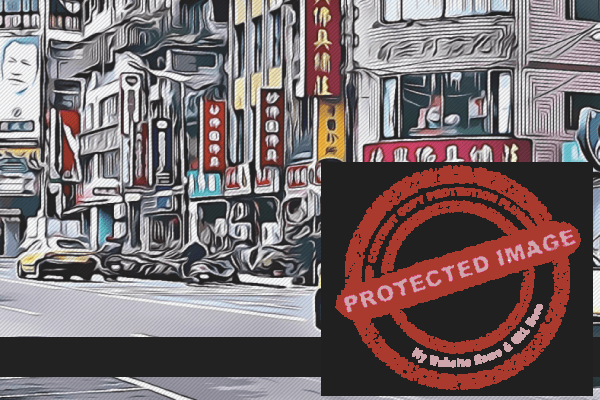
Taipei has an extensive transport infrastructure; however, bikes are a common sight throughout the city. The city has 180 bicycle lease stations in which you rent or pay a fee based on the duration that you plan to use the bike. Detailed cycling maps and clear route signs can be found throughout the city. It is important to note that motorcycles outnumber cars in Taipei at a ratio of more than 2 to 1.
- The Taipei Mass Rapid Transit (MRT) connects the city of Taipei. With six lines and one hundred and thirty-one stations, the MRT is used frequently by visitors and locals to get around the city, with an estimated two million trips made daily. The MRT is praised for its safety, reliability, and quality. Its design means you can travel from north to south, west or east by not changing more than two times in a single journey. For people with mobility issues, the good news is that every Taipei MRT has a gate for use by disabled, wheelchair or passengers with strollers or prams. Tickets can be purchased for a single journey with typical costs ranging from 70 cents to a maximum of 2 US dollars and 30 cents. Visitors to the city can also purchase travel passes from one to three days costing from 6 to 14 US dollars. For more information, visit the Taipei Rapid Transit Corporation website (https://english.metro.taipei/cp.aspx?n=BECC2E7AC426F659)
- The Taipei Joint Bus System connects Taipei to the greater metropolitan area. The bus network consists of 15 agencies, 300 bus routes and hundreds of buses. The buses are frequent and reliable, and many have been adapted for people with mobility issues. The average cost is 50 cents per segment up to 1 US dollar 60 cents for a three-segment ticket. When boarding the bus, you can pay for trips by pre-purchasing tokens (navy blue with metro Taipei logo) or swiping your Easycard over the sensor zone. If you opt to use an Easycard, you will need to swipe the card when you board and again before leaving the bus. For more information about the bus routes, please visit the Ebus website (https://ebus.gov.taipei/Dybus.aspx) and visit the Guide to Taipei website for more information relating to the Easycard (https://guidetotaipei.com/article/easycard-%E6%82%A0%E9%81%8A%E5%8D%A1)
- For spectacular views from above the city, a visit to the Maokong Gondolas is a must. The gondola service comprises four passenger stations and cabins that can carry 5 to 8 passengers. The gondola runs between Maokong Station, Zhinan Temple, Taipei Zoo South and Taipei Zoo station. The gondolas run from 9 am to 9 pm Mondays to Sundays. The average journey time takes approximately 30 minutes as it travels along the 2.5 miles or 4 kilometres of track. There are 30 crystal cabins with glass bottoms and large, expansive windows for those looking for picture-perfect scenery. Single-journey tickets cost from under 3 US dollars for one-stop up to over 4 US dollars for three stops per person. For more information, visit the Maokong Gondola website (https://english.gondola.taipei/Default.aspx)
- The official taxis in Taipei are yellow. With over 30,000 registered taxis, finding a cab around the city is not hard. You can hail taxis or book by calling (55688) on a cell phone or 405-88-888 via a payphone. You can also book using the Taiwan Taxi 55688 app available for Android and IOS. Taxis in Taipei are metered, and the minimum fare is approximately 3 US dollars, with an additional 30 cents charged per 200 meters travelled. It is important to note that many of the drivers do not speak English or will be able to read your destination if written in English. If possible, ask your hotel or friends to write your destination in Mandarin to avoid any problems before you travel
Interactive Taipei MRT
Discover the interactive travel maps on Gayther. Zoom in and learn more about individual stations, all of the lines and much more

Taipei offers a wide range of accommodation options, from low-cost hostels to luxury hotels. The available accommodation options mean that there is something to suit everyone’s tastes and budgets. The average cost per night in the city is 250 US dollars. The city’s extensive transport infrastructure means staying outside the city centre is also a viable option. It is also important to note that hotel room rates are subject to a 5% government tax and a 10% service charge.
- The CityInn Hotel Plus Ximending Branch (///happier.compose.abruptly) is a contemporary hotel in the LGBT district of Taipei. The hotel has 66 rooms and is only 300 meters away from Ximending and 120 meters away from Ximen Metro Station, both on the Bannan Line (BL) and Songshan-Xindian Line (G). CityInn Hotel has a 24-hour front desk and concierge service with staff speaking Mandarin, Japanese, Korean and English. The hotel also offers free Wi-Fi access in all public areas and free wired and Wi-Fi options in all rooms. The average standard room prices are around 115 US dollars. There are many room options available, from standard to family rooms. For more information regarding the hotel, please visit CityInn Hotel’s website (https://www.cityinn.com.tw/c4/en/)
- The Originn Space Taipei (///flatten.foremost.brochure) is a guest house in Datong district close to the Dadaocheng neighbourhood, which is known for its history and culture. The Originn Space Taipei is set in a stunning historical building. All of the rooms in this boutique guesthouse include air-conditioning and feature Nordic furniture from the 1960s and 1970s. The staff at Originn Space Taipei speak Mandarin and English, and the guesthouse offers free Wi-Fi in all public spaces and within guest bedrooms. The guesthouse is close to Dihua Street, known for its markets where shoppers can buy a range of delicacies. Originn Space Taipei is only 200 meters away from The Yanping Riverside Park, 100 meters from the Xiahai City God Temple and 400 meters from the Ningxia Night Market. The average room costs 160 US dollars per night, and many room options are available. For more information, visit the Originn Space Taipei website (http://originn-space.taipeihotelinfo.com/en/)
- The Grand Hyatt Taipei (///strong.endings.reporter) is the largest 5-star hotel in the area. It is only 100 meters away from Taipei 101 and 200 meters from the observatory. The 850-room hotel offers spectacular views of the observatory and the city landscape. The hotel and rooms offer luxury and a world-class culinary experience within its restaurants and bars. Whether by the pool or when visiting the Xinyi district, one of the wealthiest areas of Taipei, this hotel provides guests with the amenities and location to make their stay in the city special. The hotel is close to three MRT/Metro stations; the 101 World Trade Centre Station is 200 meters away. The Xiangshan Station and the Taipei City Hall station are 400 meters away. The average price per night per room is 160 US dollars, and the hotel has a wide range of room options, from standard rooms to executive suites. For more information on the Grand Hyatt Taipei and ways to book, visit the hotel’s website (https://www.hyatt.com/en-US/hotel/taiwan/grand-hyatt-taipei/taigh)
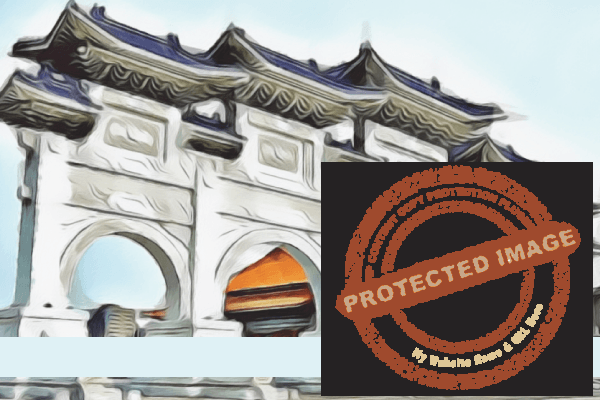
Taipei is generally a safe and gay-friendly city. It is a city that never sleeps, and 24-hour breakfast shops can be found in Taipei. Getting around the city is easy via Taipei’s extensive transport infrastructure. The city’s 7-Eleven stores, which has more than any other city per capita, is more than just a convenience store. You can also collect packages and even pay for concert and parking tickets. The city is warm and sunny; however, it is known to rain for short periods several times throughout the day during certain times of the year. Taiwanese people are friendly, polite and family orientated, making it the perfect city destination for travellers looking for excitement and beautiful scenery in an Asian city
Taipei is a stunning city with a lot of things to do. Discover Taipei for yourself.
- The National Palace Museum (///blame.definite.primed) is located in Shilin in Taipei; the closest station is the Shilin MRT station which is on the Red (R) line. The museum is home to one of the largest collections of Chinese imperial artefacts and artworks, with approximately 700,000 pieces. The pieces were collected over the centuries by the various Chinese emperors. The museum shares its roots with the Palace Museum in the Forbidden City. The museum is open from Tuesday to Sunday between 8 am and 5 pm and is typically closed on Mondays. Tickets can be reserved online, and the average cost for a ticket is less than 13 US dollars per person per day. For more information and to purchase a ticket online, visit the National Palace Museum website (https://www.npm.gov.tw/en/)
- City Gates (///sizes.because.relaxing) dates back to 1884 when the wall and gates were built after the Qing dynasty. The wall surrounds the city and is approximately 3.1 miles or 5 kilometres in length. When constructed, the city could be accessed via any one of five gates (Taipei East Gate, Taipei West Gate, Taipei South Gate, Taipei North Gate and the Taipei Auxiliary South Gate). During the early years of Japanese colonial rule, a number of the walls were destroyed. After World War II, when Taiwan became part of the Republic of China, many walls were rebuilt; however, many of the original features and designs were not observed or incorporated. The only original gate still standing can be found at the Taipei North Gate. A visit to the gates is free, and regardless of their history, they are all still imposing and impressive structures
- Daan Forest Park (///inkjet.restored.singers) is located in the Daan District of Taipei and is a park that occupies twenty-six hectares. The park is used by visitors and residents alike, and it offers a large green space for various outdoor activities. Daan Forest Park contains two ponds, several pavilions, strolling paths and a jogging loop. As well as a theatre, children’s playground, skating rink, and a wide variety of animals live there, including squirrels, ducks, egrets, and turtles. The park with its tall trees and plants all offer a quiet space in a bustling city, and it is not unusual to see people exercising or performing Tai Chi
- Liberty Square (///guitar.fines.selects) is also known as Freedom Square, is a public plaza covering 240,000 square meters in the Zhongzheng district of Taipei. The square has been the backdrop to many of Taiwan’s important historical events. It is home to three significant landmarks and civic parks: the National Chiang Kai-shek Memorial Hall, the National Concert Hall and the National Theatre. A garden surrounds the plaza, and the square is close to the Presidential Office Building. The square and its landmarks offer a glimpse to Taiwan’s impressive architecture, and the good news is that it is free to visit
- Taipei 101 Observatory (///workshops.certainty.richly) is an observatory in the Xinyi district of Taipei. Taipei 101 is 509.2 meters or 1,671 feet high and has 101 floors, occupying a space of 412,500 square metres or 4,440,100 square feet with 61 elevators. The elevators can travel at incredible speeds, taking passengers from the 5th to 89th Floor in 37 seconds. The observatory is a common sight in New Year fireworks displays and is a significant landmark within the Taipei landscape. Visitors to the observatory can see stunning views for miles in all directions around Taipei. The observatory is open every day from 9 am to 10 pm and is spread over four floors. The ticket office can be found on the 5th Floor, and tickets cost an average of 21 US dollars per person, and children under the age of 115cm in height can go in for free. Getting to and from the observatory is easy; take the Red line (R) to Xiangshan Metro Station
Taipei is a stunning city with a lot of things to do. Discover Taipei for yourself.
Taipei is one of the most gay-friendly cities in Asia and the world. It was the first country in Asia to legalist gay marriage and is home to the largest pride parade in Asia. Even more impressive is that same-sex relationships have never been illegal in Taiwan. The main gay area in Taipei is in the Ximending district, where you will find many gay bars, clubs, restaurants and cafes, in and around the Ximen Red House theatre (///intend.unit.toffee). Gay bars and clubs can be found in other areas and districts around Taipei; however, Ximending has the highest concentration. Even though there are gay hotels, all hotels in Taipei are gay-friendly, meaning members of the LGBTQIA+ community can stay in any district or area of Taipei without any problems or incidents. Attitudes towards the LGBTQIA+ has been changing in Taiwan for a long time now. It is considered rare for children or adults to face homophobia. Taiwanese people are friendly and welcoming, which extends to members of the LGBTQIA+ community, making it a popular destination for travellers worldwide.
With average flight times from Europe taking approximately 14 hours and from the east coast of the US taking about 15 hours, getting to Taipei will take time. Though most travellers will likely be required to take a long-haul flight, it is worth the effort. Whether you incorporate Taipei in a wider tour of Taiwan or even to other parts of Asia, it is vital not to leave yourself short when visiting Taipei. Allowing at least 3 to 4 whole days to take in all of the sites, even after three days, this beautiful city will still likely leave you wanting more. For first time visitors to Asia, the language barrier can be a problem initially. With a bit of planning and asking help from your hotel or people you meet, you will quickly see that navigating the city and its attractions is not a problem. Food is central to Taipei, and you will find a variety of foods on offer. You will not find it challenging to find something you like, from street vendors to high-end restaurants.
Visitors to Taipei usually come away in awe of this city and all it offers. It will likely ignite a desire to see more of Taiwan and to understand the country’s unique history and culture. Once you have visited the city once, you will find yourself trying to find ways to incorporate Taiwan into your future travel plans. Taipei and Taiwan deserve to be top travel destinations as they both have a lot to offer. The Taiwanese people are core to making it such a unique and friendly place to visit.
A Chinese proverb states, “Every step makes a footprint.” Take a step by visiting Taipei, and you will want to leave your footprint there for an eternity.
With average flight times from Europe taking approximately 14 hours and from the east coast of the US taking about 15 hours, getting to Taipei will take time. Though most travellers will likely be required to take a long-haul flight, it is worth the effort. Whether you incorporate Taipei in a wider tour of Taiwan or even to other parts of Asia, it is vital not to leave yourself short when visiting Taipei. Allowing at least 3 to 4 whole days to take in all of the sites, even after three days, this beautiful city will still likely leave you wanting more. For first time visitors to Asia, the language barrier can be a problem initially. With a bit of planning and asking help from your hotel or people you meet, you will quickly see that navigating the city and its attractions is not a problem. Food is central to Taipei, and you will find a variety of foods on offer. You will not find it challenging to find something you like, from street vendors to high-end restaurants.
Visitors to Taipei usually come away in awe of this city and all it offers. It will likely ignite a desire to see more of Taiwan and to understand the country’s unique history and culture. Once you have visited the city once, you will find yourself trying to find ways to incorporate Taiwan into your future travel plans. Taipei and Taiwan deserve to be top travel destinations as they both have a lot to offer. The Taiwanese people are core to making it such a unique and friendly place to visit.
A Chinese proverb states, “Every step makes a footprint.” Take a step by visiting Taipei, and you will want to leave your footprint there for an eternity.
Discover all of the topical articles written by people from across the community and friends, all sharing their stories, opinions and experiences
More from Gayther
Discover all of the exciting and entertaining articles written by people from the worldwide LGBTQIA+ community, sharing their stories, opinions and experiences in their own style and from their unique perspectives
IMPORTANT DISCLAIMER: All published articles have been written by members of the general public. Many will likely not be journalists nor be affiliated with any professional bodies associated with members of the media. The articles will likely be based on the authors’ own opinions, views, and experiences. Gayther does not endorse or accept any responsibility or liability regarding any materials within the news and media pages. This page may contain external links to third party websites; Gayther provides these links for your convenience and does not endorse, warrant or recommend any particular products or services. By clicking on any external links, you will leave Gayther and be taken to the third-party website, which you do so at your own risk and by accessing the site, you will be required to comply with the external third party’s terms and conditions of use and privacy policies


